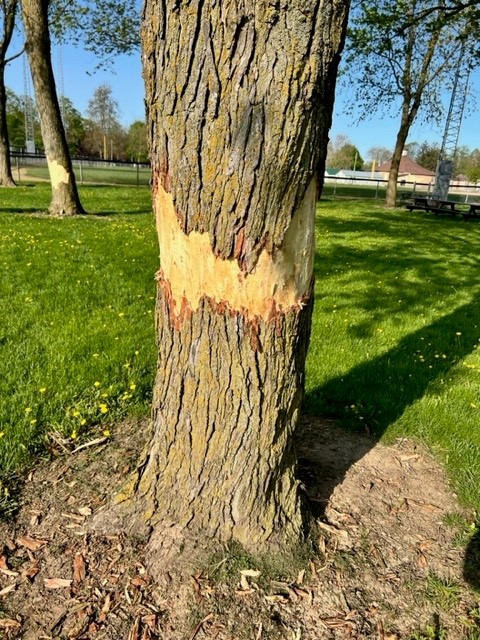Police in Mitchell, Ont., northwest of Stratford, are reporting significant damage to two 80-year-old maple trees on public property.

Officers responded to a mischief report on Wellington Street just before 10 a.m. May 15, but police say the incident itself occurred sometime between 5:30 p.m. and 6 p.m. on May 12.
According to police, three unknown individuals removed the outer bark of the trees, causing $25,000 worth of damage and threatening the health of the trees.
Andrew Smit, senior consulting arborist for Treescape Certified Arborists in Peterborough, is not associated with the case but was able to provide insights into the tree appraisal process in general.
He told Global News appraisers “can use various approaches and methods to either determine the monetary value” in terms of timber or carbon sequestering, for example; the contributory value, or what it contributes to the overall market value of the property it’s on; or “the cost to reproduce the functional utility of the tree that’s either been damaged or lost.”
“That tends to be some of the confusion even amongst our industry is the difference between finding the value of a tree versus the cost to reproduce a tree,” explained Smit, who also sits on the regional plant appraisal committee of the Ontario Chapter of the International Society of Arboriculture.

Get breaking National news
Smit could not comment on this incident specifically, but he said in similar cases a damage estimate would be based on the cost “to reproduce that functional utility that the tree served on that property.”
“It’s basically trying to figure out or calculating a way of taking a brand new tree from a nursery and finding a unit cost for that tree and extrapolating it up and adding in installation costs and there’s all sorts of other things that go into it,” he said.
“Basically, coming up with a cost that represents what it cost to reproduce a tree of that age in that magnitude.”
Smit added that removing the bark of a tree can severely damage it or even lead to the death of the tree.
“In simple terms, for any tree, the transplant vessels for a tree that they use to transport food and nutrients, water from the roots up through to the canopy are found underneath the bark.”
Cutting the bark away cuts off that section of the transport system, impacting the tree’s ability to move nutrients. If only a section of bark is removed, the tree can grow what’s known as woundwood to protect itself, but if a whole band around the circumference of the tree is removed, recovery would be “very difficult.”
The investigation into the damaged trees in Perth County is ongoing.







Comments